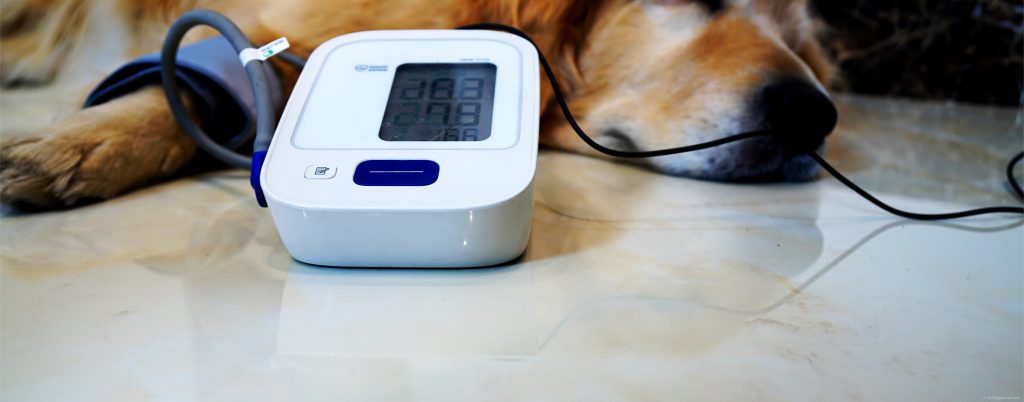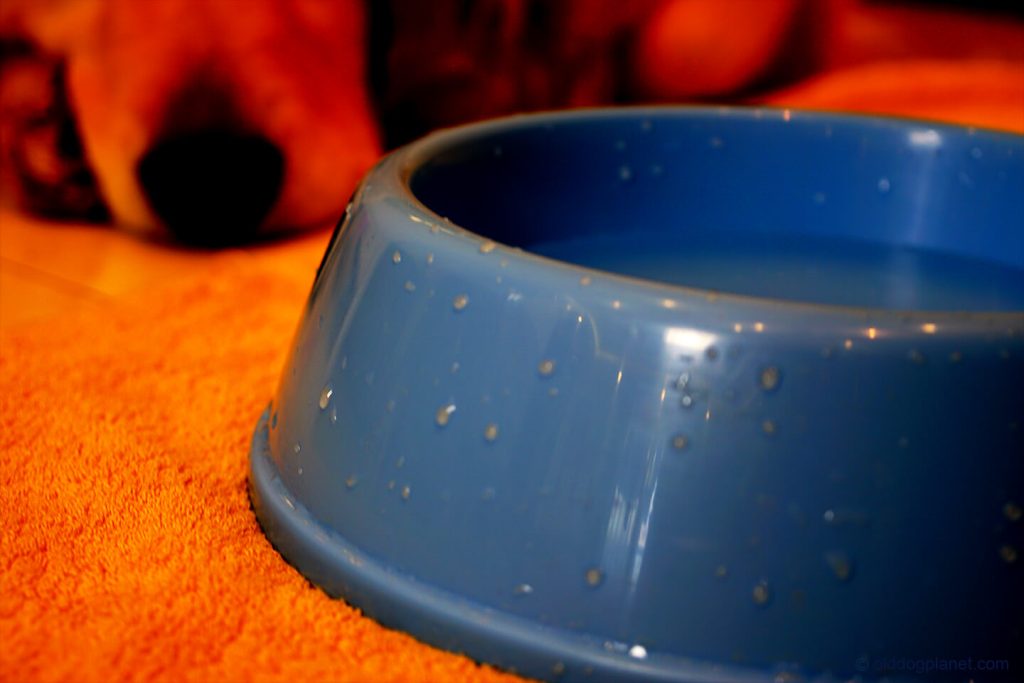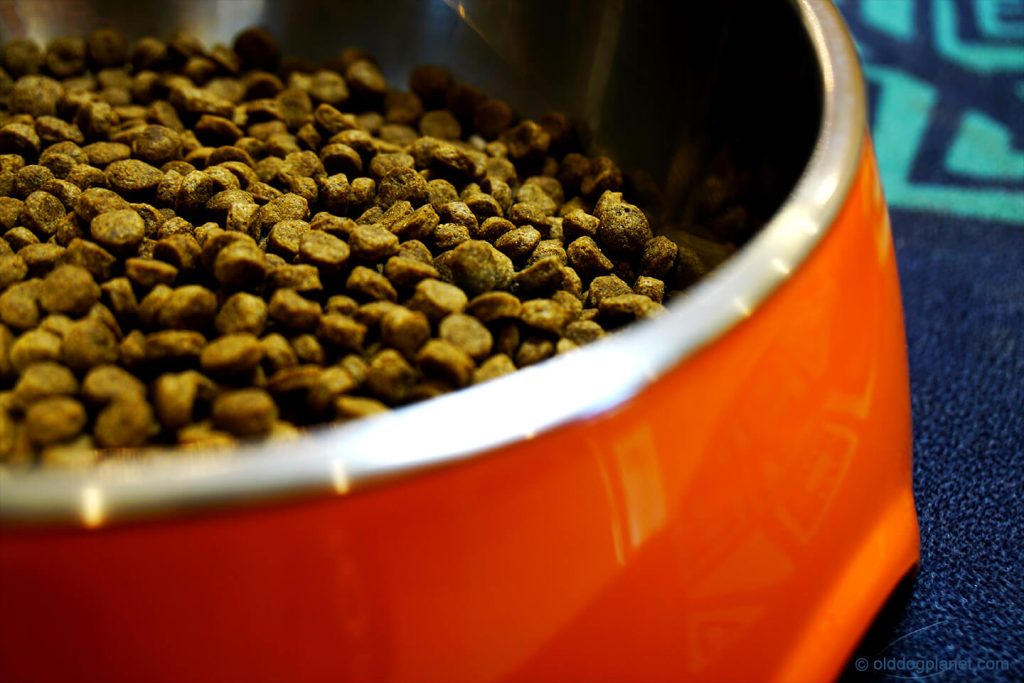Table of Contents
ToggleOverview of Hypertension in Senior Dogs
Senior dogs, especially those with chronic conditions such as kidney disease and diabetes, are at a higher risk for developing hypertension. Hypertension, or high blood pressure, is a condition that can silently progress and cause significant health issues if left unmanaged. It is often secondary to other underlying conditions, making it a common yet critical concern in geriatric veterinary care. In this blog post, I will explain to you Dog High Blood Pressure Symptoms and preventive measures.
Importance of Early Detection and Management
Early detection and proactive management of hypertension are vital to prevent the severe complications that can arise from untreated high blood pressure. These complications can affect multiple organs and systems, leading to issues such as kidney damage, heart disease, and vision loss. By recognizing the early signs and symptoms of hypertension, pet owners can seek timely veterinary care, which can significantly improve the quality of life and longevity of their furry companions.
Key Dog High Blood Pressure Symptoms to Watch For
What happens when a dog’s blood pressure is high? Here are key dog high blood pressure symptoms to watch for.
1. Eye Symptoms
• Nystagmus: Involuntary movement of the eyes, often described as darting back and forth.
• Retinal Detachment: The retina detaches from the back of the eye, leading to vision impairment or blindness.
• Sudden Blindness: Abrupt loss of vision, often a critical sign of severe hypertension.
• Pupil Dilation: Enlarged pupils that do not respond normally to light.
2. Nose Symptoms
3. Limb Symptoms
• Circling: Repetitive, compulsive circling behavior, often indicative of neurological issues.
• Balance Issues: Struggling to maintain a balanced position or frequent stumbling.
• Weakness or Paralysis: Difficulty getting up or moving, particularly on one side of the body.
• Poor Coordination: Inability to coordinate movements, leading to clumsiness or falls.
Recognizing these dog high blood pressure symptoms can lead to early intervention, which is crucial for managing hypertension effectively. If your dog exhibits any of these signs, it is important to consult with a veterinarian promptly to evaluate and manage their condition. Regular monitoring and appropriate treatment can help manage hypertension, ensuring your senior dog remains healthy and comfortable.
Breed and Condition-Related Predispositions
Certain breeds and health conditions can increase the likelihood of hypertension in dogs. Understanding these risk factors can aid in early detection and prevention, allowing for timely intervention and better management of the condition. Here is a detailed look at breeds and health conditions associated with a higher risk of hypertension:
1. Breeds Prone to Hypertension
Some dog breeds are genetically predisposed to hypertension. These breeds include:
- Sighthounds:
- Afghan Hound: Known for their elegant appearance and speed, Afghan Hounds are also prone to higher blood pressure levels.
- Azawakh: This West African sighthound breed has a natural tendency toward hypertension.
- Borzoi: These Russian hunting dogs are another breed with a predisposition to high blood pressure.
- Greyhound: Greyhounds, commonly retired from racing, often experience hypertension.
- Irish Wolfhound: One of the largest breeds, Irish Wolfhounds can have elevated blood pressure as they age.
- Scottish Deerhound: Similar to other sighthounds, Scottish Deerhounds are at risk for hypertension.
- Whippet: These small, fast dogs also fall into the category of breeds more likely to develop high blood pressure.
- Other Breeds:
- Australian Terrier: Small but robust, Australian Terriers are more susceptible to hypertension.
- Bichon Frise: This breed’s predisposition to conditions like diabetes can increase hypertension risk.
- Dachshund: Their long bodies and short legs, along with genetic factors, make Dachshunds prone to hypertension.
- Poodle: Particularly the smaller varieties, Poodles are among the breeds that can develop high blood pressure.
- Schnauzer: Both miniature and standard Schnauzers have a higher incidence of hypertension.
- Spitz: These breeds, including the German Spitz, can also be prone to elevated blood pressure levels.
2. Health Conditions Associated with Hypertension
Certain chronic health conditions can significantly increase a dog’s risk of developing hypertension:
- Cushing’s Disease: This condition, characterized by excessive production of cortisol, can lead to elevated blood pressure.
- Diabetes: Dogs with diabetes often experience complications that can include hypertension due to changes in blood sugar and metabolic demands.
- Hyperthyroidism: Overactive thyroid glands can increase blood pressure by accelerating metabolism and heart rate.
- Kidney Disease: This is one of the most common conditions associated with hypertension in dogs. Studies show that up to 93% of dogs with kidney disease also suffer from high blood pressure.
- High-Sodium Diets: Diets high in sodium can lead to fluid retention and increased blood pressure.
- Obesity: Excess body weight can strain the heart and blood vessels, leading to hypertension. Like humans, obese dogs are more likely to develop high blood pressure and related complications.
3. General Risk Factors
Even dogs that seem healthy can develop hypertension. Research indicates that up to 10% of “healthy” dogs may have high blood pressure. This underscores the importance of regular veterinary check-ups and monitoring, even in dogs that do not exhibit obvious signs of illness.
By recognizing the breeds and conditions that predispose dogs to hypertension, owners can take proactive steps to monitor and manage their pets’ health, ensuring timely intervention and effective management of high blood pressure.
Monitoring and Managing Hypertension
Monitoring and managing blood pressure in dogs is essential, especially for those at risk of hypertension. Regular monitoring allows for early detection and better management of this condition, which can prevent severe health complications. While veterinarians may not always recommend routine blood pressure checks unless symptoms are evident, concerned pet owners can benefit from regular at-home monitoring.
1. Importance of Regular Monitoring
Regular monitoring of blood pressure in dogs can help detect hypertension early, enabling timely intervention and treatment. This is particularly important for senior dogs and those with conditions predisposing them to high blood pressure. Consistent monitoring helps track changes over time and assess the effectiveness of management strategies.
2. How to Measure Dog Blood Pressure at Home
Equipment Needed
- Household Electronic Sphygmomanometer: A device designed for measuring blood pressure, available from pet supply stores or veterinary clinics.
Steps to Measure Blood Pressure
- Acclimate Your Dog to the Cuff:
- Get your dog accustomed to the cuff by having them wear it for short periods, about 5 minutes at a time.
- Reassure and calm your dog during this process to alleviate any fear or anxiety.
- Repeat this acclimation process until your dog is comfortable with the cuff.
- Create a Calm Environment:
- Conduct the measurement in a quiet room free from distractions such as other animals, loud noises, or active appliances.
- Allow your dog to relax in the room for 5-10 minutes before taking measurements to ensure they are calm and their blood pressure is stable.
- Position Your Dog Correctly:
- Have your dog lie down in either a ventral (on their belly) or lateral (on their side) position, whichever they find more comfortable.
- Positioning the dog in these supine positions helps keep the cuff close to the heart, resulting in more accurate readings.
- Take Multiple Measurements:
- Place the cuff on one of your dog’s legs, either a front leg or hind leg.
- Press the start button on the sphygmomanometer and take readings every few minutes for about 10-15 minutes.
- Ensure consistency by using the same leg and maintaining the same position for all readings.
- Obtain at least seven readings, discarding the first measurement to allow the dog to settle into the process.
- Calculate Blood Pressure:
- Review the readings and discard any outlier measurements that are significantly higher or lower than the others.
- Calculate the average of the consistent readings to determine your dog’s systolic and diastolic blood pressure.
Regularly measuring and recording your dog’s blood pressure at home can provide valuable information to your veterinarian and help in the ongoing management of hypertension. Keeping a log of readings can help track trends and make informed decisions about your dog’s health care.
3. Dog Blood Pressure Classification and Normal Values
Hypertension Classification
- Mild Hypertension: Systolic >150 mm Hg / Diastolic >95 mm Hg
- Moderate Hypertension: Systolic >160 mm Hg / Diastolic >100 mm Hg
- Severe Hypertension: Systolic >180 mm Hg / Diastolic >120 mm Hg
Normal Blood Pressure Reference Values for Different Breeds
Blood pressure can vary significantly between different breeds of dogs. Knowing the normal reference values for your dog’s breed can help you determine whether their blood pressure is within a healthy range. Here is the normal dog blood pressure chart for some common breeds:
These values provide a benchmark to determine if your dog’s blood pressure is within a normal range or if it indicates a potential health issue that requires veterinary attention.
Regular monitoring and comparison with these reference values can help in early detection and management of hypertension, ensuring that your dog remains healthy and free from complications associated with high blood pressure.
Preventive Strategies for Dog Hypertension
To prevent hypertension in dogs, it’s essential to adopt comprehensive strategies that include dietary management and supplementation. These approaches can significantly reduce the risk of high blood pressure and its associated health complications.
1. Diet and Nutrition Tips
To prevent hypertension in dogs, it’s essential to adopt comprehensive strategies that include dietary management and supplementation. These approaches can significantly reduce the risk of high blood pressure and its associated health complications.
Specific Dietary Recommendations for Preventing Hypertension
A balanced diet is essential for maintaining your dog’s overall health and preventing conditions like hypertension. Here are some specific dietary recommendations:
- Specific Dietary Guidelines for Senior Dogs: Senior dogs often require diets that are lower in calories but rich in essential nutrients. Focus on providing foods that support cardiovascular health and maintain an ideal body weight. Ingredients to look for include lean proteins, whole grains, vegetables, and fruits. Avoid foods with high sodium content and excessive fats.
- Low-Fat, Low-Sodium Diet: Reducing the intake of fat and sodium helps manage weight and prevent fluid retention, both of which are crucial in controlling blood pressure. Opt for high-quality commercial dog food that meets the Association of American Feed Control Officials (AAFCO) standards, ensuring it is formulated for your dog’s age, breed, and health status.
- High-Fiber Foods: Incorporate high-fiber foods like green beans, carrots, and sweet potatoes. Fiber helps manage weight and supports heart health.
- Lean Proteins: Choose lean proteins such as chicken, turkey, and fish. These proteins are easier on the heart and kidneys compared to fatty meats.
- Omega-3 Fatty Acids: Omega-3s, found in fish oil, are beneficial for cardiovascular health. The recommended dose is 115mg/kg (63.56mg/lb) of EPA and DHA combined. Ensure you do not exceed the National Research Council’s safe upper limit of 370mg/kg (204.5mg/lb).
- Fresh Fruits and Vegetables: Fresh produce provides essential vitamins and antioxidants. Blueberries, apples (without seeds), and leafy greens are excellent choices.
Recipes for Low-Sodium, Heart-Healthy Homemade Dog Food
Recipe 1: Turkey and Sweet Potato Delight
Ingredients:
- 1 lb ground turkey
- 1 cup cooked quinoa
- 1 cup diced sweet potatoes
- 1/2 cup chopped spinach
- 1/2 cup grated carrots
- 1 tablespoon fish oil (for Omega-3s)
Instructions:
- Cook the ground turkey in a non-stick skillet over medium heat until fully cooked.
- In a separate pot, cook the quinoa according to package instructions.
- Steam or boil the sweet potatoes until tender.
- Mix the cooked turkey, quinoa, sweet potatoes, spinach, and carrots in a large bowl.
- Drizzle the fish oil over the mixture and stir well.
- Allow the food to cool before serving. Store leftovers in the refrigerator for up to three days.
Recipe 2: Chicken and Veggie Stew
Ingredients:
- 1 lb boneless, skinless chicken breasts
- 1 cup diced carrots
- 1 cup green beans, chopped
- 1/2 cup peas
- 1/2 cup diced apples (without seeds)
- 2 cups low-sodium chicken broth
- 1 tablespoon flaxseed oil (for Omega-3s)
Instructions:
- In a large pot, boil the chicken breasts in low-sodium chicken broth until fully cooked. Remove and shred the chicken.
- Add the carrots, green beans, peas, and apples to the broth and simmer until tender.
- Return the shredded chicken to the pot and stir in the flaxseed oil.
- Let the stew cool before serving. Store leftovers in the refrigerator for up to three days.
2. Exercise Recommendations
Regular exercise is vital for maintaining a healthy weight and cardiovascular system in senior dogs. Here are some suggested exercise routines:
Daily Walks
- Duration: Aim for 20-30 minutes of walking daily. Adjust the duration based on your dog’s stamina and health condition.
- Pace: Maintain a moderate pace that allows your dog to stay active without overexertion.
- Surfaces: Choose soft surfaces like grass or dirt trails to reduce joint strain.
Gentle Play
- Fetch: Engage in gentle games of fetch with a soft ball or toy. This keeps your dog active and mentally stimulated.
- Tug-of-War: Use a soft rope toy for a light tug-of-war game, ensuring it’s not too strenuous for your dog.
Swimming
- Low-Impact Exercise: Swimming is excellent for dogs with joint issues as it provides a full-body workout without putting stress on their joints.
- Supervised Sessions: Always supervise your dog while swimming to ensure safety. Start with short sessions and gradually increase the time.
Indoor Activities
- Interactive Toys: Use puzzle toys and treat-dispensing balls to keep your dog engaged and active indoors.
- Short Training Sessions: Incorporate short training sessions to teach new tricks or reinforce basic commands. This keeps your dog mentally sharp and physically active.
3. Regular Veterinary Check-Ups and Home Monitoring
- Regular Check-Ups: Routine veterinary visits are crucial for early detection and management of hypertension. During these visits, your veterinarian can conduct blood pressure screenings and evaluate your dog’s overall health.
- Proactive Home Monitoring: Alongside regular vet check-ups, home monitoring of your dog’s blood pressure can provide ongoing insights into their cardiovascular health. Using a household electronic sphygmomanometer, follow the steps outlined previously to measure your dog’s blood pressure accurately and consistently.
Regular vet check-ups are essential to tailor exercise routines to your dog’s specific needs and health conditions. Always monitor your dog for signs of fatigue or discomfort and adjust the exercise intensity accordingly.
4. Dog Blood Pressure Medication
Once your dog has been diagnosed with hypertension, your veterinarian will likely recommend a treatment plan that includes medication to help manage the condition. It’s important to understand the different types of medications available and how they work to effectively lower blood pressure. Below, we will explore the most common medications used to treat hypertension in dogs, their mechanisms of action, and their specific applications.
Common Medications for Treating Hypertension in Dogs
-
ACE Inhibitors (Angiotensin-Converting Enzyme Inhibitors)
- Common Drugs: Enalapril, Benazepril
- How They Work: ACE inhibitors block the conversion of angiotensin I to angiotensin II, a substance that narrows blood vessels. This results in relaxed blood vessels and lower blood pressure.
- Uses: Often used for dogs with chronic kidney disease or heart disease.
-
Calcium Channel Blockers
- Common Drugs: Amlodipine
- How They Work: These medications prevent calcium from entering the cells of the heart and blood vessel walls, leading to lower blood pressure.
- Uses: Primarily used in cases of severe hypertension or when other medications are ineffective.
-
Beta-Blockers
- Common Drugs: Atenolol, Propranolol
- How They Work: Beta-blockers reduce heart rate and the heart’s output of blood, which lowers blood pressure.
- Uses: Typically prescribed for dogs with concurrent heart disease.
-
Diuretics
- Common Drugs: Furosemide, Spironolactone
- How They Work: Diuretics help the kidneys remove excess sodium and water from the body, reducing blood volume and pressure.
- Uses: Often used in dogs with fluid retention issues, such as those with heart failure.
Conclusion
Managing and preventing hypertension in dogs is crucial for their health and well-being, especially for senior dogs and those with chronic conditions like kidney disease and diabetes. Recognizing dog high blood pressure symptoms and understanding the importance of early detection can significantly improve your pet’s quality of life. Here are some specific recommendations to help you take action:
Regular Monitoring: Regularly check your dog’s blood pressure at home using a sphygmomanometer. Keep a log of the readings and share them with your vet during check-ups.
Healthy Diet: Feed your dog a balanced diet with low-fat and low-sodium options. Consider incorporating lean proteins, high-fiber foods, and Omega-3 supplements. You can also try heart-healthy homemade recipes like Turkey and Sweet Potato Delight or Chicken and Veggie Stew.
Exercise Routine: Ensure your dog gets regular exercise tailored to their health and stamina. Daily walks, gentle play, and swimming are excellent options. Use interactive toys and short training sessions for indoor activities.
Veterinary Check-Ups: Schedule regular vet visits for comprehensive health screenings, including blood pressure checks. Discuss any concerns and follow your vet’s advice for managing hypertension.
Medication: If your dog is diagnosed with hypertension, follow your vet’s prescribed treatment plan, which may include medications like ACE inhibitors, calcium channel blockers, beta-blockers, or diuretics.
By following these steps, you can help manage your dog’s blood pressure effectively and prevent severe health complications. If you notice any signs of hypertension or have concerns about your dog’s health, contact your veterinarian immediately. Early detection and intervention are key to maintaining your dog’s health and ensuring a happy, comfortable life.




